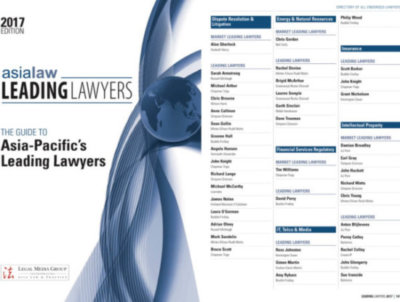On Monday 15 April 2013 some of the most significant changes in Australian patent law in 20 years will enter into force, and will affect all patent applications with an examination request filed on or after this date.
How should my patent specification be written now to address the changes?
- Showing ‘utility’ or usefulness of the invention;
- Providing sufficient description (‘sufficiency’) to enable a skilled person to reproduce the invention across the full width of the claim scope;
- Providing sufficient support in the specification for a claim and not introducing speculative claims that go well beyond the scope of the description in the specification.
To meet the above criteria, you must ensure that your patent specification explores all the ways your invention might be used, which means supporting the various embodiments with examples in the specification. Be certain to also describe the best method known at the time of filing.
Will the steps to obtain an Australian patent change?
No. The same process will be followed, but several key deadlines have been tightened, so acting quickly is critical.
Previously, when filing an application into Australia, it was possible to wait with filing the request for examination. Typically, IP Australia would issue a Direction notice and the applicant then had up to six months to file the request from the date the notice was issued. This time period has now been shorted to only two months.
In addition, once a patent application was examined, the applicant had up to 12 months to address all issues raised and could, as of right, obtain up to another nine months of time extensions for on payment of late fees. This additional nine months has now been removed, and has dramatically reduced the time available to address all issues raised. Furthermore, unlike other countries such as NZ, the 12 month time period is final, which likely means that rights will lapse even if the failure to meet the deadline was caused by the patent office itself.
Oppositions to the granting of a patent also have stricter time limits imposed, and the traditionally light excuses for extensions of time will disappear. The parties will now only be allowed time extensions for exceptional circumstances.
Can I add extra matter into my specification post filing?
No. In the past it was possible to add extra matter on the basis that it provided further explained of the invention. Now, once filed, the description cannot have material added to it unless it is correcting an obvious mistake or clerical error. Again, if the specification is drafted professionally, this is unlikely to be an issue; but beware and make sure any ambiguous terms are explained well in the specification.
Will my rights be stronger?
By and large, yes, a more thorough examination process under the new rules should mean that any eventual granted claims are more robust, as they are more likely to be valid than might have been the case previously. On the flip side, innovators looking to search the art to find gaps can now do so with more certainty, since patents with wide claims or dubious validity will likely be rejected prior to grant. This will now help clarify where innovation can occur.
That said there has been some erosion in patent rights. It is possible for third parties to legally infringe a patent in order to obtain regulatory approval, or for experimental use. The full boundaries of these use provisions are detailed to some extent in the new laws and regulations, and may well be cause for litigation as time goes by. Note, however, that use provision is not limited by technology, as is the case in other countries. New Zealand for example is specific around seeking regulatory approval for pharmaceuticals.
Can I be certain of how the new rules will be interpreted?
No. Although IP Australia has made its own interpretations, no doubt new cases in Australia will test the boundaries of the new laws and clarify some of the grey areas. Some of the changes though are derived from laws used in the UK, Europe and the USA, so some guidance may be taken from those jurisdictions. We’ll keep you posted of any further changes and developments.






